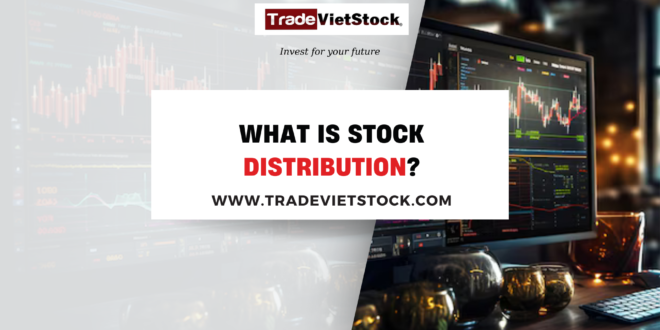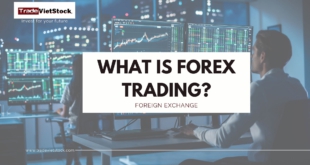What Is Stock Distribution? Signs and Strategies to Handle It
Hello everyone! Today, the admin of Trade Viet Stock will guide you through understanding stock distribution—an essential concept for anyone involved in the stock market. Recognizing this phase early on can help you avoid significant investment losses.
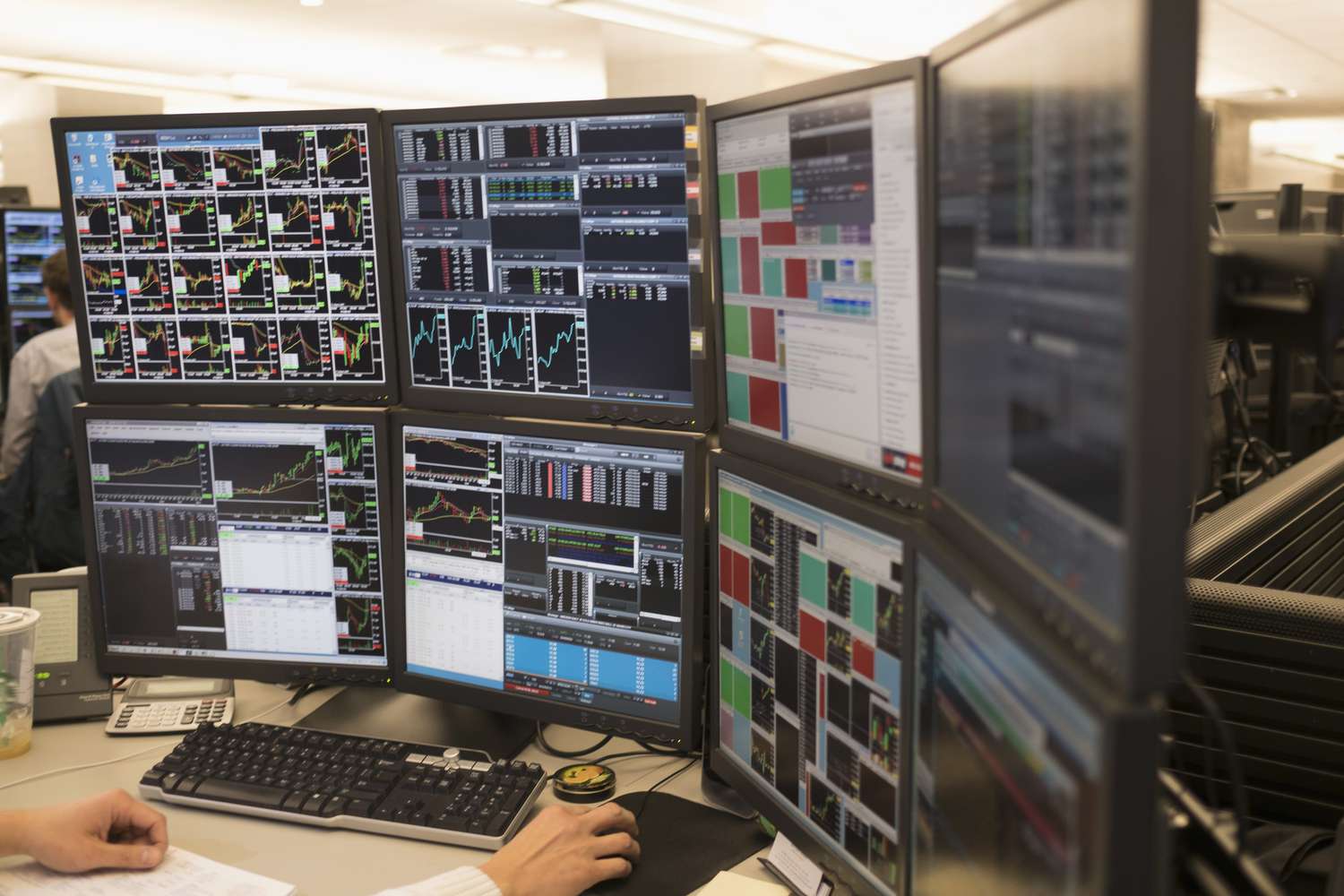
I. What Is Stock Distribution?
Simply put, stock distribution happens when major investors, institutions, or investment funds decide to sell off a stock after it has seen significant price increases. Rather than selling everything at once, they distribute their shares over multiple trading sessions to avoid panic selling and sharp price declines.
During this phase, smaller retail investors or newcomers may get “trapped” by looking at the price charts and thinking the stock will keep rising. However, this is often when the “big players” are quietly exiting.
Once the distribution phase ends, with no buying support left, the stock typically starts to experience a sharp decline.

II. How to Identify Stock Distribution
Here are some key signs to help you spot when a stock is entering the distribution phase:
1. Price spikes early in the session, but drops sharply by the end
This is a classic signal! A stock may open with a strong price increase, creating excitement among investors. However, by the end of the session, the price suddenly drops, accompanied by a surge in trading volume. This is known as a “bull trap,” where small investors are lured into buying at high prices.
2. Tug of war between supply and demand
During distribution, trading volume often spikes as large investors sell off shares. However, the stock price doesn’t immediately drop because retail investors continue buying. This phase can last for several sessions or even weeks.
3. Sharp price drops at the start of the session with high volume
If a stock’s price drops sharply right at the beginning of the session, accompanied by high trading volume, it’s likely that large investors are aggressively selling. This is usually the final stage of distribution before the stock enters a steep decline.
4. Large fluctuations at significant price peaks
This is a clearer and more decisive signal compared to the short-term signs above. During this phase, the stock experiences continuous fluctuations around key peaks, such as historical highs or yearly peaks, with exceptionally high trading volume. High liquidity at these peaks indicates two things: fear of missing out (FOMO) is driving demand, while smart money is exiting.
Example 1:
In 2017, TSLA (Tesla) hit a historical peak at around $26 with extremely high liquidity. During this time, the stock fluctuated sharply, rising around 30% in a short period before plummeting by almost the same percentage. This large fluctuation happened over several months, accompanied by high volume.
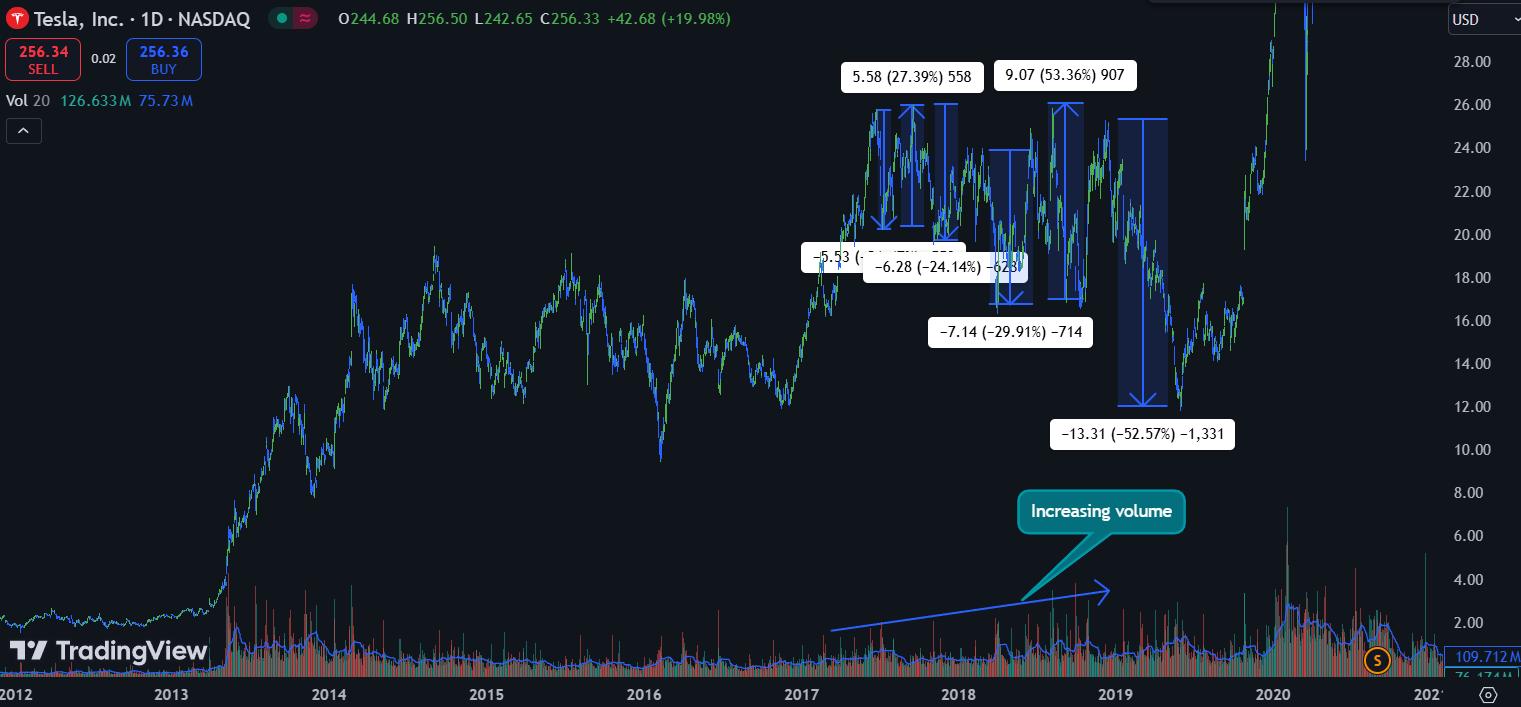
Example 2:
At its all-time high in 2022, TSLA once again experienced a similar large-scale distribution phase, with 30% swings. This distribution phase also lasted a significant amount of time before the stock officially entered a downtrend. Liquidity was noticeably higher than when the stock was at lower price levels.

III. What to Do When You Detect Stock Distribution?
Spotting stock distribution can help you avoid risks, especially when the stock is at its peak. Once the distribution phase ends, the stock usually enters a painful downtrend, like how HPG stock dropped 70% after its distribution phase.
Here’s what you can do to protect yourself if you detect distribution late or aren’t quick enough to react:
1. Diversify your portfolio
Never put all your eggs in one basket. Investing in just one stock exposes you to significant risks during its distribution phase. Diversify your investments across 5-10 stocks depending on your capital size. For example, if you have a portfolio of 1 billion VND, you might split it across 3-4 stocks. This number can increase with the size of your capital. Tailor this strategy to your risk tolerance and trading style.
2. Closely monitor trading activity
If you notice the signs of distribution, pay close attention to the trading sessions. Don’t rush to buy if you see high trading volume without corresponding price increases or if the price stays flat.
3. Exit when things look bad
If you’ve made a profit on the stock, don’t hesitate to sell when you see distribution signs. Remember, protecting your profits is just as important as making them. There’s a saying in the market: “Better to drool than to bleed,” meaning it’s better to lock in a small profit than to suffer large losses.
4. Leverage algorithmic trading tools
At Trade Việt Stock, we use various tools to identify different stock phases, including technical indicators we’ve developed ourselves. These indicators are based on data analysis and mathematics, making them more logical and less emotional. You can use these tools to improve your investment efficiency.
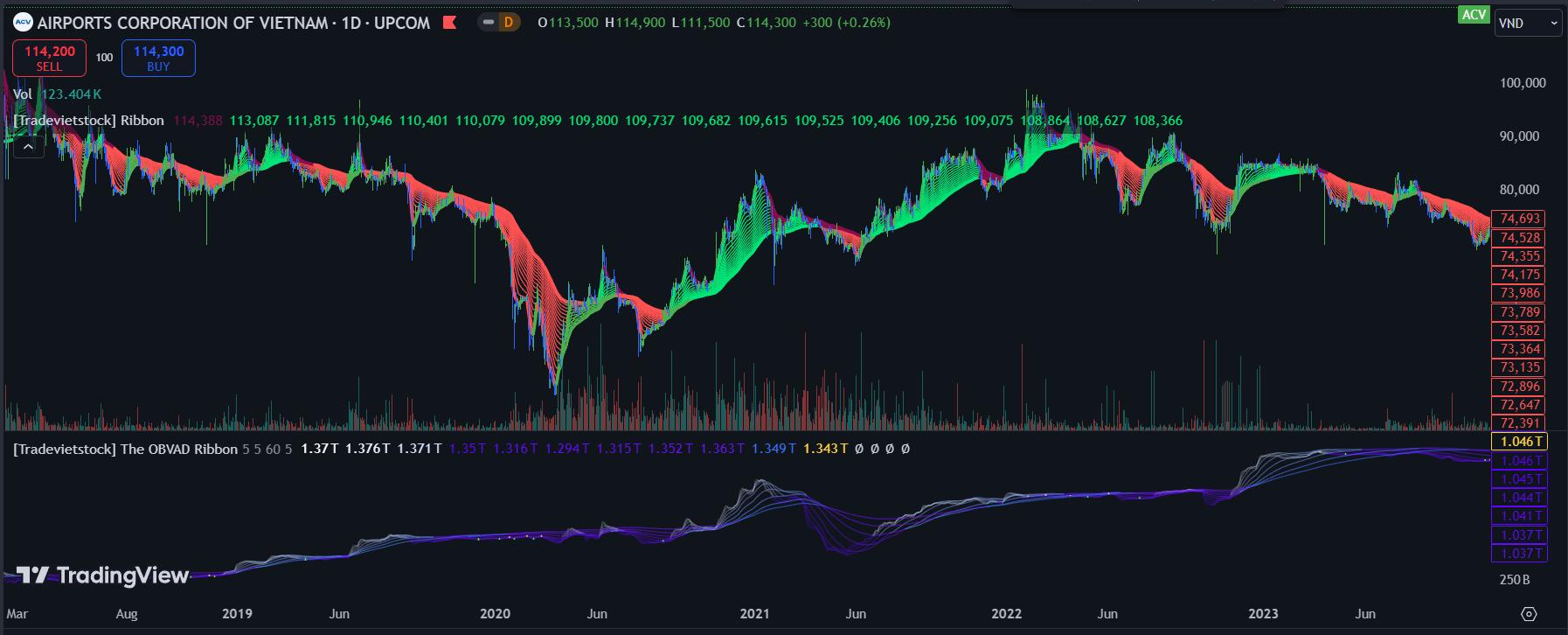
IV. Conclusion and Trading Account Registration
Stock distribution is a critical phase that investors need to be aware of. However, identifying it can be quite tricky and is often confused with a “washout” phase.

In summary, if you can spot the distribution phase early, you can avoid major risks and preserve your profits when the stock starts to decline after distribution ends.
If you want to learn more about stock market investing and crypto/forex trading tips, stay updated on the Trading Guide!
Wishing all investors success!
 Cộng đồng blog chia sẽ kiến thức cộng đồng
Cộng đồng blog chia sẽ kiến thức cộng đồng
